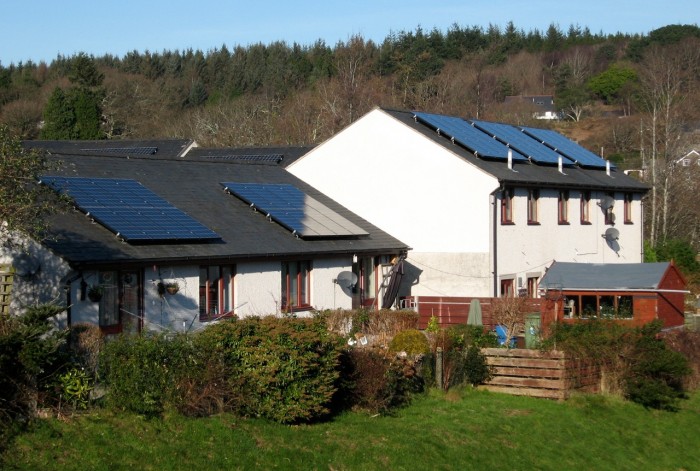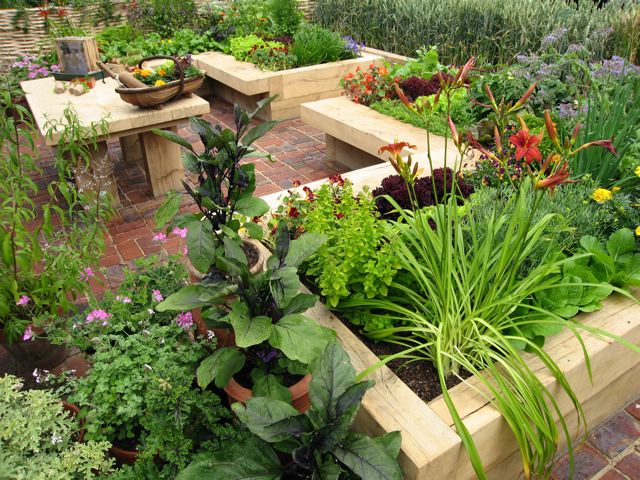High-tech sunshine harvesting is all very well if you can afford it, but there’s an easier and more earth-friendly way of turning sunlight into energy right outside your back door.
The trouble with me right now is that every car journey I make has me swerving perilously close to the kerb, such is the distracting lure of the glint of sunlight on glass. As the sun grows stronger, gardening powers up, and (to my passengers’ terror) I’m much more interested in what’s stirring in the nation’s greenhouses and polytunnels than I am in the road ahead. Spring journeys by train and bus are far less accident-prone, but whatever my mode of travel, there’s another kind of glinting that’s catching my eye, and it’s one that’s got me thinking.
It’s hard to make any journey through a city, a town or even a village these days and not feel the urge to look up; what was once a rare novelty, confined to communities of the more eco-minded amongst us, is now an increasingly common sight. The objects lifting our gaze are shiny, flat, blue-grey in colour, square to rectangular in shape, and always found on the sunniest slope of a roof. These high-tech eye-catchers sit motionless as they soundlessly harvest free and renewable modern sunshine, while helping us to reduce our oversized first-world ‘carbon footprints’. And they have FITs, which can both reduce our energy bills and earn us money.

Twigged yet? I’m talking, of course, about solar photovoltaic panels (PVs), which more and more households are having fitted to their roofs. These sun-harvesters convert sunshine into ‘green’ electricity which can be used in your home and/or fed back into the national power grid. They work on bright days without direct sunshine as well as on sunny ones, and the power is green and non-polluting because it’s being generated without burning the carbon dioxide-liberating ‘fossil fuels’ coal or natural gas.
Although arguments rumble on about how efficient/good an investment PVs are in not-always-so-sunny countries like ours (they also ‘sleep’ at night), they are an iconic and rather beguiling way for us to ‘do our bit’ toward tempering the chaos promised by our changing climate. As for the FITs, these are the ‘feed-in tariffs’ which householders get paid, via a government scheme, for any electricity they generate (even if they use it themselves). Put simply, if you install PVs you get paid for doing something that, environmentally, is a pretty ‘good thing’.
But it’s a good thing that comes at a price: even basic PV systems cost several thousand pounds, and they can run into the tens of thousands. It’s this nagging thought that draws my eyes back down from the roofs to the more low-tech, frugal and familiar garden level, where modern sunshine also falls. In a world where complication seems king, and ‘progress’ often conquers common sense, our window-boxes, balconies, yards, patios, gardens and allotments – whatever patch we’re growing on – offer us simple, hands-on ways to do all sorts of good things for the world around us – with no prospect of us having a fit at the price tag.
Turning sunlight into electricity is, of course, going to take a bit of nifty and pricey kit, but using sunlight to shrink our individual carbon footprints is something we gardeners can do for a fraction of the cost – we’re talking a few quid, not thousands. And it’s something we really can do. Fixing a PV array on your roof, like fitting insulation to your home to make it less energy-hungry, is a one-off carbon eco-hit (and in the case of installing PV, you can’t even do it yourself). Gardening, on the other hand, is much more earth-friendly in that it is something we can all do, and keep on doing – until we eventually reach the compost zone.

Take growing our own food. Raising the stuff we eat within eyeshot of our kitchens – or just a short walk or bike ride away if we grow on an allotment – is probably the single most eco-friendly, hands-in-soil activity there is. Delinking from our current, energy-intensive ‘food chain’ by growing some of our own food, organically, using non-polluting sunshine, means goodbye ‘food miles’ and hello ‘food footsteps’ (or ‘bike miles’, I guess). Out goes resource-hungry fertiliser and pesticide use, processing, packaging, transportation, storage and selling, and in comes residue-free, low-carbon, seasonal food at its nutritional peak. And there’s no need to go on the roof to do it – greenhouses, polytunnels, porches, conservatories and cloches are all grounded ways of capturing sunshine and cutting carbon. PVs grab sunlight and turn it into electricity to keep the lights on; we grow plants that turn it into body-powering food.
But there’s more. Growing some or all of your own vegetables, fruit and herbs makes you more self-reliant and less dependent on that long and increasingly tenuous, earth-encircling food chain. Collectively, food-growing gardeners help to usher our nation closer to its own more shockproof state of self-reliance – just like the electricity flowing from our roofs does. My grouse is that folk installing PVs get rewarded, via FITs, for doing something inherently good for the world around us by generating green electricity. Who’s going to pay me for growing a mouthwatering bowl of hyper-local tomatoes or raspberries?
Don’t worry, I’m not expecting any government to start paying me to grow food – although it would be nice, and the idea is surely not as off the wall as you might at first imagine. PVs are fine for those with dosh who are prepared to make a long-term commitment, but until prices fall, they’ll remain beyond the reach of many with strong eco-leanings. But everyone can go out and sow seeds, pot up seedlings, plant onion sets, shallots, seed potatoes, fruit trees and bushes… and so much more. One thing gardening shows us, in its own timeless way, is that ‘doing our bit’ toward more balanced and ecologically sustainable living is achievable in simple, effective ways that can have a positive and hefty collective impact. To boot, you get to have plenty of fun and eat like the gods.
I’ll dream on about the day when a government scheme rewards me for growing stuff. Who knows, with an increasingly food-uncertain future ahead, gardeners might one day be checking the latest ‘grow-it tariffs’ to see how well their efforts are doing. Never mind high-tech FITs, how about some down-to-earth gardening GITs?
Text and images © John Walker


